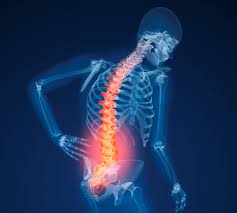This is part one of a two-part series on Scoliosis (scole-lee-oh-sis). Scoliosis is a spinal condition that results in a lateral bend of your spine. Physical therapy (PT) for scoliosis may be beneficial to help you relieve pain, improve spinal mobility, and prevent worsening of your lateral spinal curvature. Your physical therapist can work with you to strengthen muscles that support your spine and improve your postural awareness.
What Is Scoliosis
Scoliosis is defined as an abnormal bend or curvature of the spine. There are many causes of scoliosis, and it may affect anyone at any age. It occurs in between 2 – 3% of the population. There are different types of scoliosis. Three recognized causes include:
- Idiopathic – The lateral curvature comes on for no apparent reason.
- Neuro-muscular – A neurological or muscular problem causes the lateral curvature of the spine.
- Congenital – You are born with a lateral curvature of your spine.
Sometimes scoliosis develops early in your life, and other times the onset of the curvature is during adulthood. Scoliosis may cause symptoms ranging from mild to severe, and the lateral curvature may limit basic functional tasks like sitting, bending, walking, or in severe cases, breathing.
Symptoms
- Mid or low back pain
- Abnormal sensation in the arms or legs
- Difficulty maintaining an upright posture
- Difficulty breathing or shortness of breath – with severe curvature
Diagnosis of scoliosis
In most cases your physician can simply look at your back and notice a curve. Bending forward at the waist can confirm the diagnosis, as a lateral curvature of the spine also causes a rotation of the spine. This will make your ribs on one side of your back more prominent while bending. This “rib hump” is a tell-tale sign of scoliosis.
If your doctor suspects scoliosis, they may take an X-ray. This picture will show the position of the bones of your spine, and the degree of curvature can be measured. Some people have an “S” curve; their lower lumbar spine curves one way, and their middle thoracic curves the opposite direction. Others have a “C” curve where the lumbar and thoracic spine curve in one direction together.
As your spine curves laterally, the vertebra rotates slightly. Parts of the spine that should have a slight rounding are flattened.
There are many treatments available for scoliosis. Mild cases may simply require watchful waiting and exercise. For moderate curves of more than 20 degrees, bracing may be used. Severe cases may require a surgical consult and intervention. Many people with mild or moderate scoliosis benefit from physical therapy to help manage their condition.
NEXT WEEK: Part Two will discuss how Physical Therapy can help you address your scoliosis.
Reference: Sears, B. (March 2020). “physical therapy for scoliosis”. Verywell health. Retrieved from: https://www.verywellhealth.com/physical-therapy-for-scoliosis-4797898
Submitted by Katesel Strimbeck PT, MS, MHA. Katesel has been a PT for 22 years, she is Director of Rehabilitation Services at North Country Hospital, and a member of the American Physical Therapy Association.


